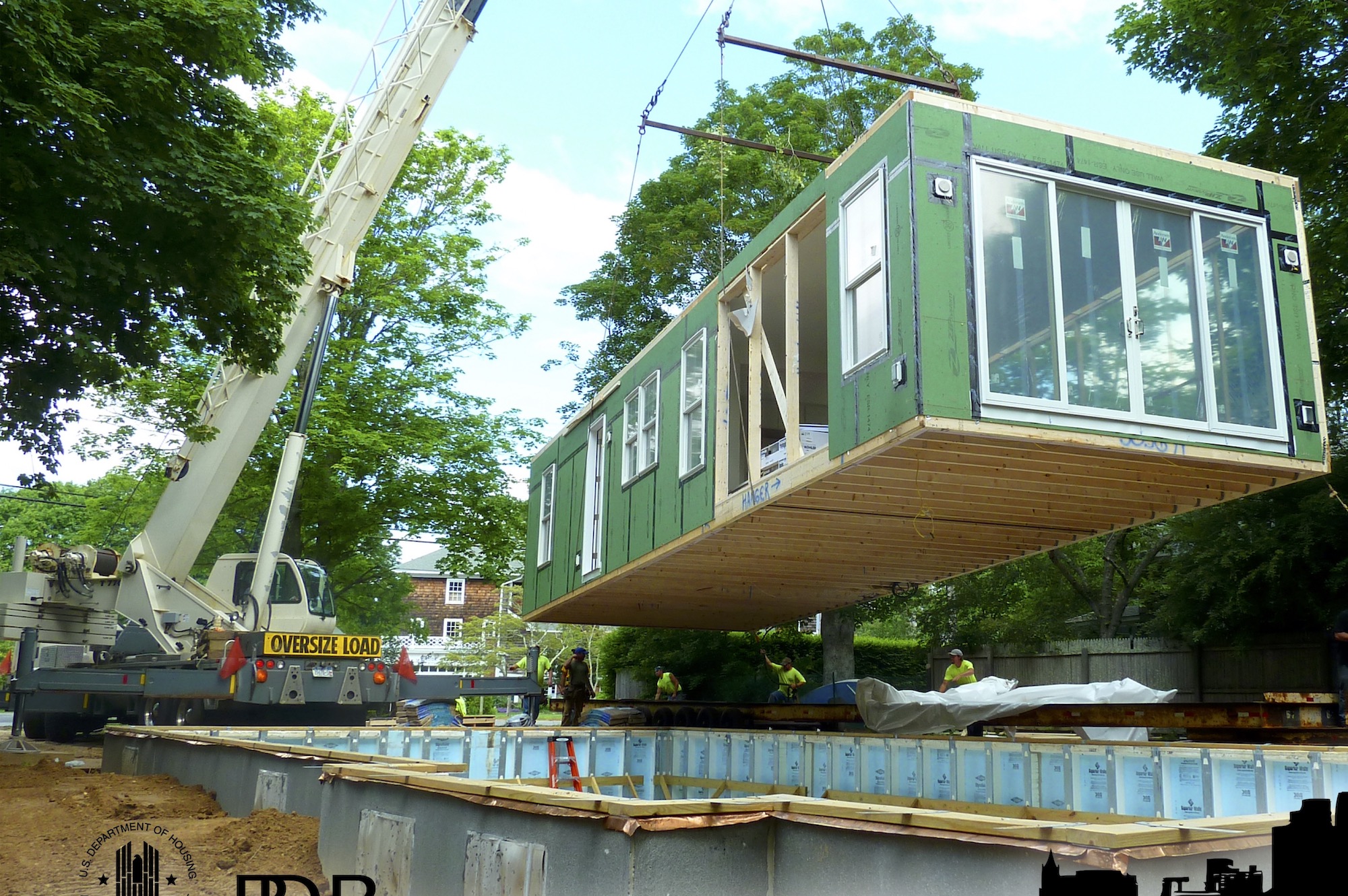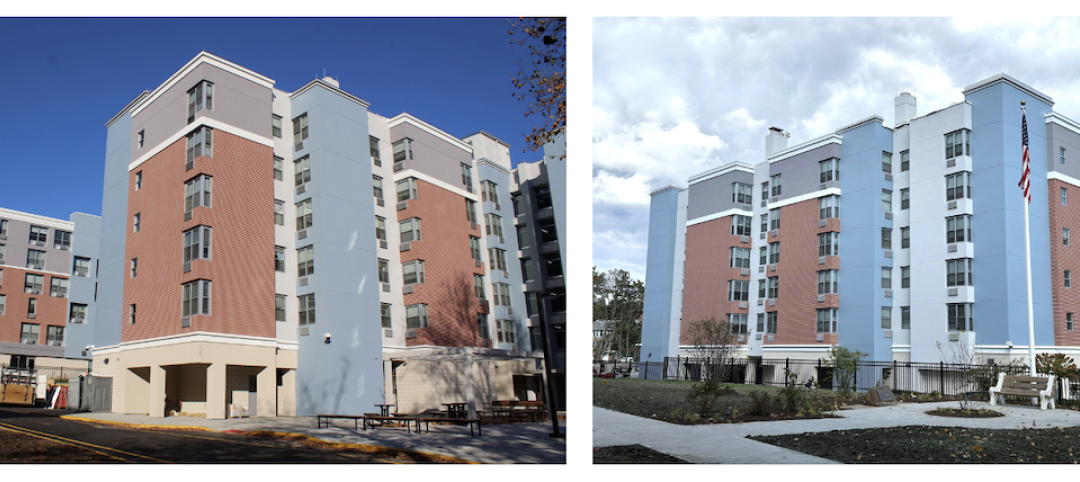The U.S. Department of Housing and Urban Development, in partnership with the National Institute of Building Sciences and MOD X, has released the Offsite Construction for Housing: Research Roadmap, a strategic report that presents the key knowledge gaps and research needs to overcome the barriers and challenges to offsite construction.
High prices for buyers and renters are forcing Americans out of their homes and making housing unattainable. This crisis is to a large extent driven by supply constraints.
Offsite construction has the potential to deliver more affordable and accessible single and multifamily housing at scale. However, offsite construction for housing in the U.S. faces several challenges to increase uptake and adoption. This stands in considerable contrast to more mature international offsite construction industries, such as those in the UK, Japan, and Sweden.
“We need an all-of-the-above approach to housing, and offsite construction represents a unique and underused opportunity to help meet the needs of America’s working families,” said AC Powell, JD, CPS, President and CEO of NIBS. “We applaud HUD for undertaking this research effort to overcome barriers and level the playing field for all construction methods to help alleviate the housing crisis.”
What’s in The Offsite Construction for Housing: Research Roadmap
The Research Roadmap was developed by a Project Technical Committee chaired by MOD X and composed of national and international stakeholders and cross-sector experts. It is intended as a roadmap for HUD to align its programs and partnerships, while simultaneously offering an industry-wide roadmap for governments, universities, and offsite companies to come together to advance offsite construction for housing.
The Research Roadmap covers six topical areas in need of coordinated research efforts, with sub-topics and specific research questions listed to help answer the knowledge gaps:
- Research Topic 1: Regulatory and Policy Framework.
- Research Topic 2: Standards and System Performance.
- Research Topic 3: Capital, Finance, and Insurance.
- Research Topic 4: Project Delivery and Contracts.
- Research Topic 5: Labor and Workforce Training and Management.
- Research Topic 6: Business Models and Economic Performance.
The NIBS Off-Site Construction Council
In 2013, the National Institute of Building Sciences established the Off-Site Construction Council (OSCC) to serve as a research, education, and outreach center for relevant and current information on off-site design and construction for commercial, institutional, and multifamily facilities. NIBS staff and members of the OSCC have supported federal and private off-site construction research projects, including toolkits, roadmaps, and reports for the off-site industry. NIBS and the OSCC encourage OSCC members and other off-site stakeholders to submit reports or projects of interest that can help in the furthering of the council's goals. For more information, visit the OSCC.
About NIBS
National Institute of Building Sciences brings together labor and consumer interests, government representatives, regulatory agencies, and members of the building industry to identify and resolve problems and potential issues in the built environment. NIBS is a nonprofit, non-governmental organization. It was established by Congress in 1974. For more information, visit nibs.org or follow @bldgsciences on Twitter and Facebook.
Related Stories
Adaptive Reuse | Mar 21, 2024
Massachusetts launches program to spur office-to-residential conversions statewide
Massachusetts Gov. Maura Healey recently launched a program to help cities across the state identify underused office buildings that are best suited for residential conversions.
Multifamily Housing | Mar 19, 2024
Jim Chapman Construction Group completes its second college town BTR community
JCCG's 200-unit Cottages at Lexington, in Athens, Ga., is fully leased.
Multifamily Housing | Mar 19, 2024
Two senior housing properties renovated with 608 replacement windows
Renovation of the two properties, with 200 apartments for seniors, was financed through a special public/private arrangement.
MFPRO+ New Projects | Mar 18, 2024
Luxury apartments in New York restore and renovate a century-old residential building
COOKFOX Architects has completed a luxury apartment building at 378 West End Avenue in New York City. The project restored and renovated the original residence built in 1915, while extending a new structure east on West 78th Street.
Multifamily Housing | Mar 18, 2024
YWCA building in Boston’s Back Bay converted into 210 affordable rental apartments
Renovation of YWCA at 140 Clarendon Street will serve 111 previously unhoused families and individuals.
Adaptive Reuse | Mar 15, 2024
San Francisco voters approve tax break for office-to-residential conversions
San Francisco voters recently approved a ballot measure to offer tax breaks to developers who convert commercial buildings to residential use. The tax break applies to conversions of up to 5 million sf of commercial space through 2030.
Apartments | Mar 13, 2024
A landscaped canyon runs through this luxury apartment development in Denver
Set to open in April, One River North is a 16-story, 187-unit luxury apartment building with private, open-air terraces located in Denver’s RiNo arts district. Biophilic design plays a central role throughout the building, allowing residents to connect with nature and providing a distinctive living experience.
Affordable Housing | Mar 12, 2024
An all-electric affordable housing project in Southern California offers 48 apartments plus community spaces
In Santa Monica, Calif., Brunson Terrace is an all-electric, 100% affordable housing project that’s over eight times more energy efficient than similar buildings, according to architect Brooks + Scarpa. Located across the street from Santa Monica College, the net zero building has been certified LEED Platinum.
MFPRO+ News | Mar 12, 2024
Multifamily housing starts and permitting activity drop 10% year-over-year
The past year saw over 1.4 million new homes added to the national housing inventory. Despite the 4% growth in units, both the number of new homes under construction and the number of permits dropped year-over-year.

















